In 2005 the RAC celebrated its centenary year by creating the Walk of Fame to commemorate the importance of motoring throughout WA and to recognise the achievements of some of the most celebrated figures in the WA motoring industry. The names and contributions of those inducted are etched in pavement outside RAC’s headquarters in West Perth. The 16 people chosen by an independent committee organised by the RAC are representative of many hundreds of people who have made motoring what it is today. In 2015 and 2023, a further two people were inducted.
PW Armstrong
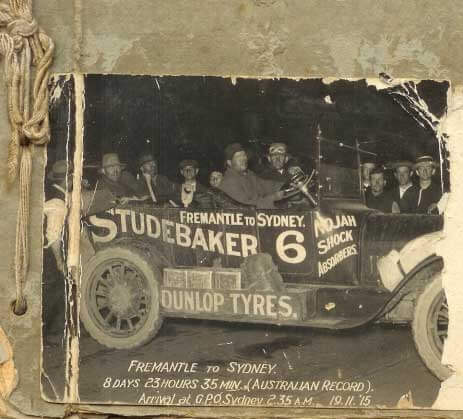
P.W. (Percy) Armstrong came to Western Australia during the halcyon goldrush years of the 1890s as a teamster working in the eastern goldfields.
Armstrong had enjoyed fame in the eastern states in 1893 when he lowered the Sydney – Melbourne bicycle record from 5 ½ days to 4 days 3 ¾ hours. His bicycle racing skills were put to good use as a cycle despatch rider on the Goldfields and he saw the possibility for bicycles when water was in short supply for horses. He soon had a chain of bicycle shops across the Goldfields.
Armstrong was to become a pioneer of the motor trade of WA.
It was only a small leap from bicycles to motorcycles and he imported his first machine, a Bassart et Accoux powered with a De Dion engine for motor pacing on bicycle race tracks. The first motor race was conducted by competitors riding two Werner motorcycles imported by him.
In 1903, he imported two vehicles for Copley and Co to begin a motor car service between Victoria Park and the city – the first motor bus service in Australia. He was a champion for a transcontinental road and set a record time for the run in 1916 when parts of the route were considered impassable.
Armand Bargigli
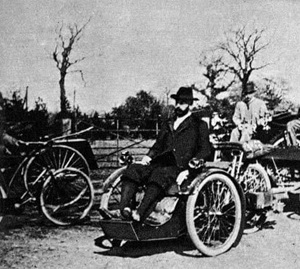
Western Australia’s first motorist was a controversial Frenchman who arrived in the State during the rip-roaring goldrush years of the 1890s. He arrived in 1896 to sell the idea of using cement pipes for the Goldfields Pipeline.
Perhaps not completely by chance, Bargigli left Albany for London on a steamer in November 1897 with other passengers on board including Sir John Forrest. He returned the following March with unusual cargo – a Leon Bollee tricycle, made in London but of French design. More like a buggy with three wheels, it was a sensation on Perth streets.
Percy Armstrong wrote of the machine: “Bargigli’s Bollee had more tricks than the celebrated California mule, but she was the best designed motor of her time.”
Bargigli came up with several concepts to secure business out of the pipeline concept but was ultimately unsuccessful. C.Y. O’Connor got the job done. Bargigli left WA and his Leon Bollee behind in a carriage builder’s factory and both it and he faded into obscurity.
Marion Bell
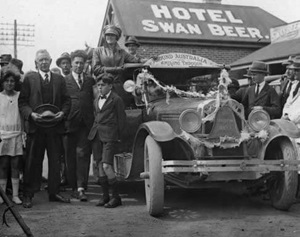
It could be fairly claimed that the first around Australia for a family holiday was accomplished by Marion Bell when she arrived back in Perth with her daughter in April 1926.
Growing up in a remote part of New Zealand, Bell became an experienced bush woman and a competent mechanic. She used these skills to operate a garage in Fremantle in partnership with her husband.
Only two people had circled the continent by car before her, but Bell’s arduous trip was accomplished with a sense of style which still inspires 90 years later. As the first woman to drive around Australia she was called ‘The Wonder Woman’. At just about every stopover point in her journey she was warmly received by well-wishers and civic dignitaries, her car embellished with a sign reading ‘Smiling Through’.
Bell continued her professional motorist’s life when she returned. She sold her fleet of charabanc buses which operated between Fremantle and Perth and established a taxi service and ambulances.
Maurice Brockwell
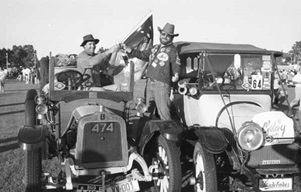
Even though the motor car is only a century old, it has spurred the passion of many people. Today, the old car movement is thriving all over the world.
One of the leaders of the movement in Western Australia was second-generation hotelier Maurice Brockwell who served for 30 years in many different capacities.
Brockwell was not afraid to put the case for historic motoring to government in the strongest terms. He was instrumental in introducing concessional licensing for collector’s cars in WA and in the establishment of the Motor Museum of Western Australia at Whiteman Park.
During the WA Inc. era, he campaigned strongly against the sell-off of the Percy Markham Collection of historic cars by the State Government.
Cecil Dent
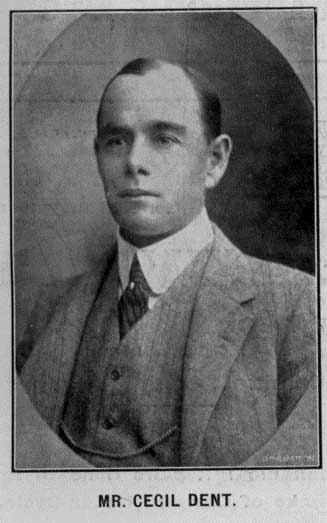
Mr Cecil Dent was a well-known real estate agent and one of the first members of the RAC. He owned a 1903 Curved Dash Oldsmobile, the first car produced in America in any quantity.
At the time, only geographical maps were available, and motorists could not determine which track would be suitable for their cars. Dent is credited with producing the first road map for motorists in the State.
The next problem was that there was no system for signage at intersections. The Government did not see it as one of their responsibilities. It is not generally known that the RAC took responsibility for erecting directional signs on country roads for many years, First it was the members themselves who erected and maintained the signs and later the RAC patrols took on the job.
August Knapp wrote of Dent that: “The really useful work, that is, useful to motorists was done by Mr. Cecil Dent who erected directional signs wherever he travelled in the country.”
Ross Dunkerton
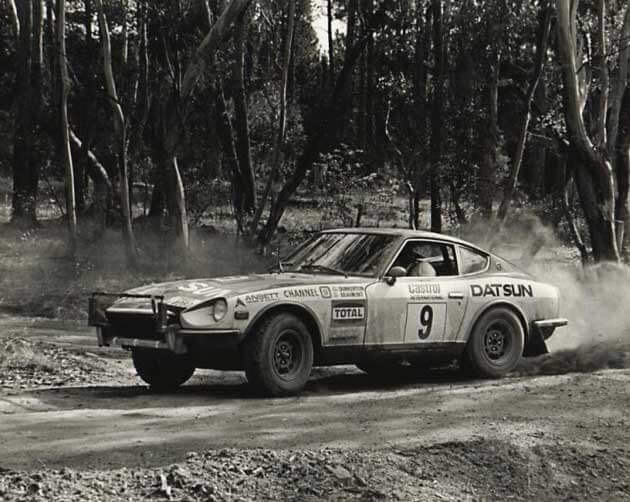
Western Australia’s most celebrated international motorsports star prefers driving at absurd speeds on dirt tracks only with a few metres from 400 years old jarrah trees to circuit racing.
Ross Dunkerton entered his first rally at 17 years of age in a Morris Minor. Spurred on by his champion older brother Jeffery, he went on to become our State’s most successful rally river.
Between 1962 and 1973, Dunkerton won 16 state events, 14 of them in a row, and the WA state title for the first four times in 1971.
When the Australian Rally Championship came to WA for the first time in 1974, Dunkerton entered as a privateer in a Datsun 240Z. He came second but in 1975, still a privateer, he bought a new Datsun 260Z for $4,000 and beat factory teams from Holden and Datsun to win the National title.
Dunkerton’s career reached event greater heights over the next decade, winning a handful of Malaysian Rally Championships and two Asian Pacific Championships. During this time he won 33 international events for Mitsubishi.
In 2004 Dunkerton drove an AWD Magna in the Australia Cup class in the Australian Rally Championship and won all six rounds.
Arthur Grady
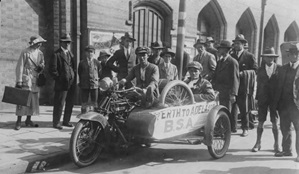
Arthur Grady was born in East Fremantle in 1901 and his first motoring experience was gained at 15 years of age when he drove a Model T Ford around the port delivering cakes and biscuits. He later owned a motorcycle shop in the building now occupied by The Home Provedore in Market Street, Fremantle.
On 1 October 1924, Grady took on what was arguably the last great motoring challenge left to accomplish in Australia - riding around Australia.
The five and a half month, 10,000 mile journey took Grady north from Fremantle across the trackless outback. He averaged 10.5 miles per hour, 78 miles per gallon of fuel and 1100 miles per gallon of oil.
At one stage during the momentous journey Grady was bogged for three days and then lost for another two before finally finding the way to continue. Amazingly, he never lost a tyre or took a puncture. He arrived at the Fremantle Town Hall to a hero’s reception on 14 March 1925. Later in that year, two more Western Australians left Perth and accomplished the feat by motor car.
Ernest Hackfath
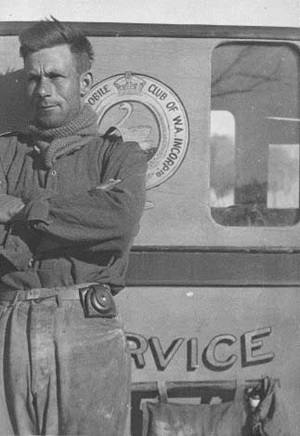
Ernest Hackfath was RAC Patrolman No. 4, and he has been selected for the RAC Centenary Walk of Fame as a symbol of the generations of RAC Patrols which have helped Western Australian motorists since 1926.
One of the RAC’s first-ever patrolmen, Hackfath is remembered as an adventurer, talented craftsman, passionate photographer and sometime inventor. He would travel across the state in his Reo Junior truck rescuing stranded drivers.
A series of three newspaper clippings from 1929 and 1930, now treasured by Hackfath’s family members, reveal the RAC’s earliest highway patrol workers were also pioneers in mapping the State’s early roads.
One details a trip by ‘Patrol Hackfath’ to Albany, where he erected direction posts to help motorists find their way. The patrolmen created the signs as they went, carefully affixing the correct aluminium letters and numbers to the blank boards they carried in their service vans. As well as sign-boarding roads, the original patrolmen were charged with gathering road condition information and road itineraries to relay to RAC Headquarters.
August Knapp
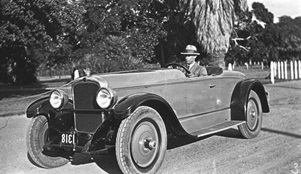
While Cecil Dent compiled the first road maps of Western Australia, August Knapp documented all the roads he could find and produced the second generation of more accurate maps. He also erected directional road signs all over the State.
Knapp was typical of the early members of the RAC. He joined the club two years after the first meeting and in 1916 was honoured as the Club’s first life member.
Knapp drove a 1903 Curved Dash Oldsmobile and his experiences with the car are typical of the early motorists who had to be engineers as much as drivers.
“And for two years we drove that car, and re-designed and renewed and rebuilt it until I felt that my flesh and blood could by no means be expected to take that engine to pieces again,” he said in 1932 reflecting on his early experiences.
Knapp will be remembered for his efforts to produce the first comprehensive road map covering the whole of the State. Explorer Frank Hann recognised his efforts by naming Kanpp Rock (at Johnson Lakes) and Knapp Hill near the Rawlinson Ranges in his honour. His legacy is the range of fine road maps covering every corner of the State produced by the RAC today.
Rosco McGlashan
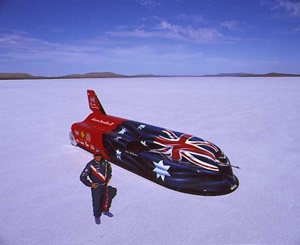
Only few people are infected with the bug to be the fastest person in the World but once it takes hold it becomes a never ending passion. Rosco McGlashan caught the bug from Donald Campbell when, as a child, he saw him drive the famous Bluebird world land speed record car.
McGlashan took the drag racing at an early age, along the way developing the world’s fastest rocket-powered go-kart (on display at the Fremantle Motor Museum) and a variety of jet powered vehicles from dragsters to trucks.
In 1994 McGlashan took his Aussie Invader II to a new Australia land speed record of 802.6 kilometres per hour. Being fastest Australian wasn’t enough, his aim was to be the fastest person in the world.
McGlashan is currently building an Aussie Invader 5R car in Australia capable of breaking the sound barrier, the current World Land Speed Record and then moving on to the ultimate goal of 1,600+ km/h.
Aubrey Melrose
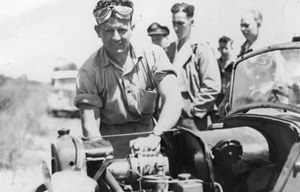
Aub Melrose is one of those larger than life characters who accomplished more in his lifetime that would seem possible.
A mechanic by trade, Melrose competed in a local speedway as a teenager before leaving to try his luck in the United Kingdom. He became a Sunbeam motorcycle team rider and was the first Australian to ride the famous Isle of Man Tourist Trophy.
Returning to Western Australia, he established the legendary Harley Scrambles motocross event at Mosman Park and won several times. In a diminutive Austin 7 he won the 1936 South Australian Centenary Trial which was the biggest rally event ever held in Australia. He crossed the Nullarbor Plain 52 times and was the first civilian to drive across the new Eyre Highway during the Second World War. He gained the approval of the Army to drive across in a car with a gas producer of his own design. A champion of the everyday motorist, his message was that even less wealthy people could use their cars during wartime if they equipped them with gas producers.
In later years he competed in the Australian Grand Prix and the famous Redex Trials around Australia.
Julie Parsons
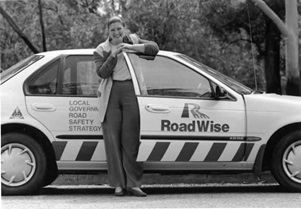
Since the formation of the RAC 110 years ago, road safety has been a critical concern. As the number of cars in the State increased so did the number of accidents. The importance of addressing road safety concerns at a local level in regional areas is vital and one of the pioneers of establishing a road safety network across the State has been Julie Parsons.
Parsons was the first person employed in 1995 to initiate the Local Government Road Safety Strategy which is now known as Roadwise. Her eight years at the helm of Roadwise saw it grow from an organisation with one employee to a large team with more than 7- road safety committees covering 142 local governments across the State.
As an advocate of road safety who had an ability to motivate community groups, schools and governments to the needs of road safety, Parsons’ efforts have resulted in fewer deaths and injuries on Western Australian roads.
Professor Gordon Stephenson
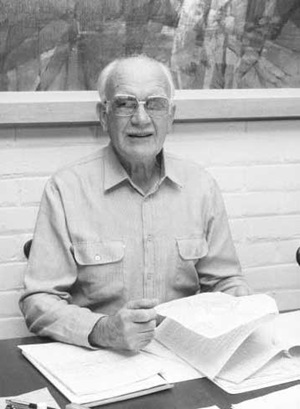
Accomplished town planner Gordon Stephenson was invited to Perth in 1953 from his post as Professor of Civic Design at the University of Liverpool to prepare a plan for the development of Perth and its suburbs.
The document was released in 1955 and became known as the Stephenson Plan. It provided a blueprint for a city of 1.4 million inhabitants by the year 2000.
The far-sighted plan called for the construction of eight new regional highways and the expansion of the road network and led to the creation of the Metropolitan Region Planning Authority.
Without the Stephenson Plan we would not enjoy the modern urban road and freeway network of Perth today.
Edward Tindale
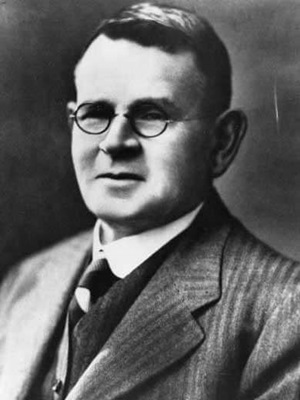
Edward Tindale was the first Chairman of the newly formed Main Roads Board in 1926 at a time when few decent roads existed in Western Australia beyond the main towns.
Tindale’s first task was to study road construction overseas and he returned to implement a program of road development which was new to the state. His philosophy was to build as many roads as possible to serve as many communities as possible rather than to build a few high quality roads which would benefit fewer people.
He imported the first modern road making machinery and set about linking regional centres by adequate roads. His road construction efforts made it practical for people to travel from the country to the city by car without having to endure roads which would sometimes be impassable in bad weather.
Western Australia’s road network owes a great deal to the pioneering efforts of Tindale.
Noel (Neville) Westwood
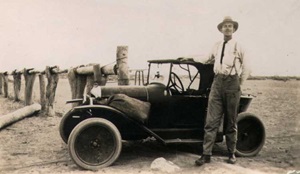
Neville Westwood was a tall man with a tiny car. A 22 year old Seventh Day Adventurist Evangelist set off from Perth with his friend GL Davies on 4 August 1925 to undertake medical missionary work in the north of the State.
Westwood owned a very second-hand 7hp Citroen with a two seater ‘skiff’ body in the shape of a boat. Many of today’s lawnmowers would have more power than this little car which had already been driven 40,000 miles before they set off.
On 8 October, they arrived in Darwin and they kept going in a clockwise direction, arriving in Sydney on 17 November. Davies left the trip in Albury, and Westwood arrived back in Perth on 30 December having driven 10,000 miles in five months.
The first person to drive around Australia accomplished the feat when there were few roads and no bridges to speak of. Today’s grey nomads owe a great deal to Westwood and his pioneering trip.
Mr W.J. (Jack) Winterbottom
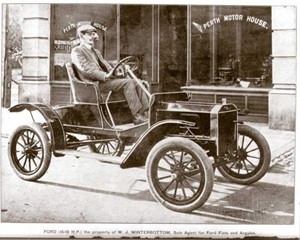
Most older Western Australians will remember one of the largest car sales companies in the State – Winterbottom Motors. The Winterbottom Motor Company was formed in 1915 and the success of the company can be attributed to its founder, W.J. (Jack) Winterbottom, who was involved with one of the first cars made in Australia.
Winterbottom worked as a mechanic at the Lewis Cycle Company in Adelaide in 1900 and made valves, timing gear and other parts for the company’s first car. He had a passion for running his own business and imported the first Ford to Perth in 1906.
He later became the importer of Dodge Brothers cars – a big seller in those days. At its peak Winterbottom’s had 700 staff. It is now part of the Automotive Holdings Group.
Perhaps Winterbottom’s most profound contribution to motoring was the way he championed the cause of Australian car manufacturing. He was instrumental in the TJ Richards Body firm in South Australia being merged with the Chrysler-Dodge distributors, which ultimately became Chrysler Australia and then Mitsubishi Australia, which manufactured cars until 2008.
Dr Ken Michael AC
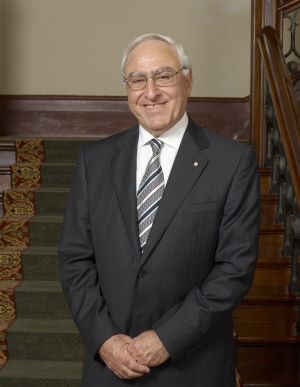
Dr Ken Michael AC is a distinguished member of the Western Australian community and has made a lasting contribution to the way West Australians travel around the state. He graduated from UWA in 1961 with a degree in civil engineering; and began his career as a bridge engineer for Main Roads. He was awarded a PhD in engineering from the University of London in 1968; and returned to Perth to continue his work with Main Roads; where he was heavily involved in road design, construction and management.
Dr Michael was appointed Commissioner of Main Roads in 1991 and held the position for over six years. In addition to his contributions to the Main Roads department, Dr Michael has been Public Service Commissioner, Chancellor of UWA, Chair of the East Perth Redevelopment Authority and Governor of Western Australia.
Dr Sudhakar Rao
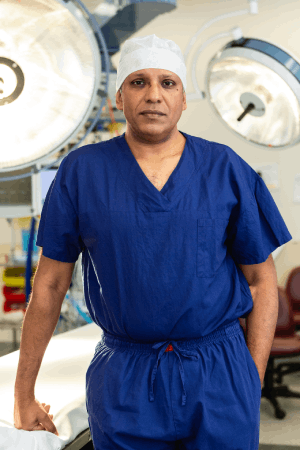
Dr Sudhakar Rao is a well-respected trauma surgeon who has studied and worked world wide and is a Fellow of the Royal Australasian College of Surgeons. He is a passionate champion for many, tirelessly commentating, advocating and collaborating with not for profits, governments and the media, in an effort to reduce the incidence and severity of injuries, especially from road trauma.
During his time as the State Director of Trauma Services in WA, based at Royal Perth Hospital (RPH), Dr Rao was responsible for establishing the State Major Trauma Service (together with other clinicians and ambulance service) to provide state of the art emergency, trauma and critical care for those with complex and critical injuries. He was also responsible for establishing RPH Trauma registry (in 1995) and the State Trauma Registry.
Dr Rao has also played a key role in many other road trauma prevention initiatives including establishing the Prevent Alcohol and Risk-related Trauma in Youth (PARTY) program at RPH, assisting with the development of the Road Trauma Support WA service and volunteering his time as the narrator at the award-winning annual RAC bstreetsmart event for secondary school students which enacts the aftermath of a crash scene and shows the direct impact a road trauma incident can have on those involved.
He is an outstanding leader of our community for his care, passionate and unwavering advocacy and professionalism for all.
